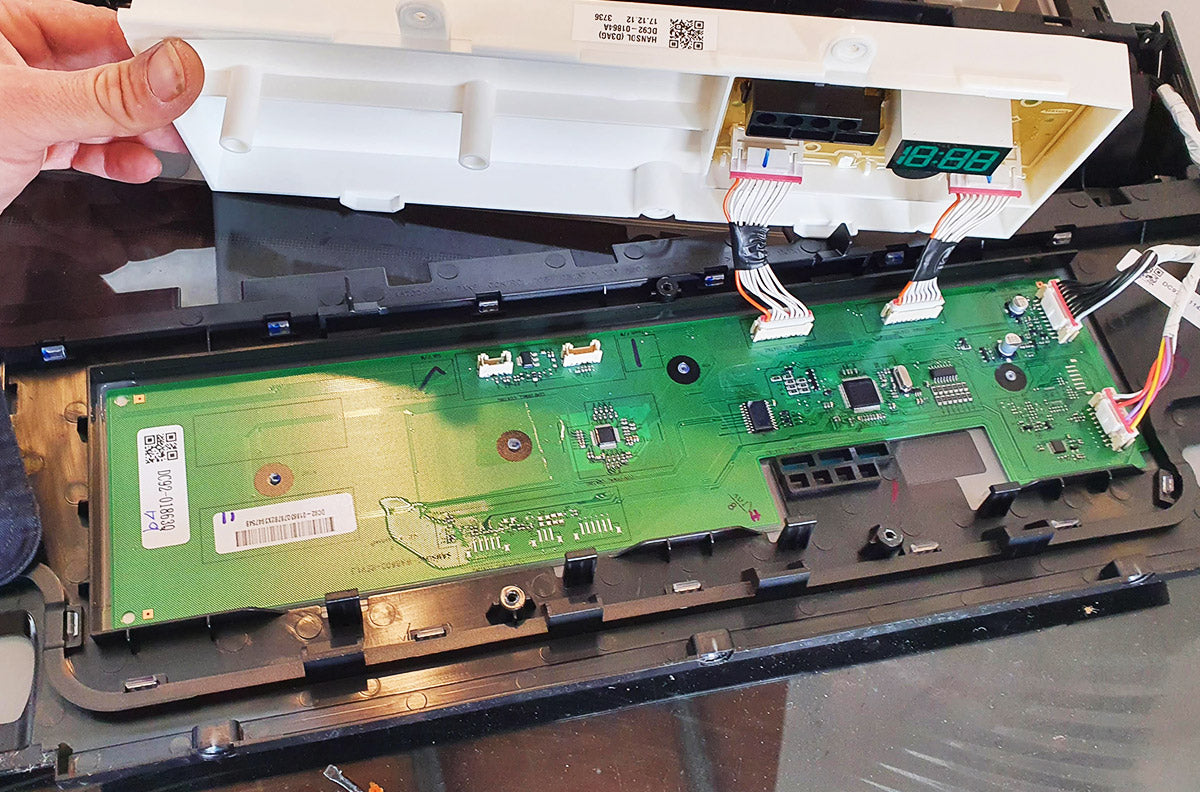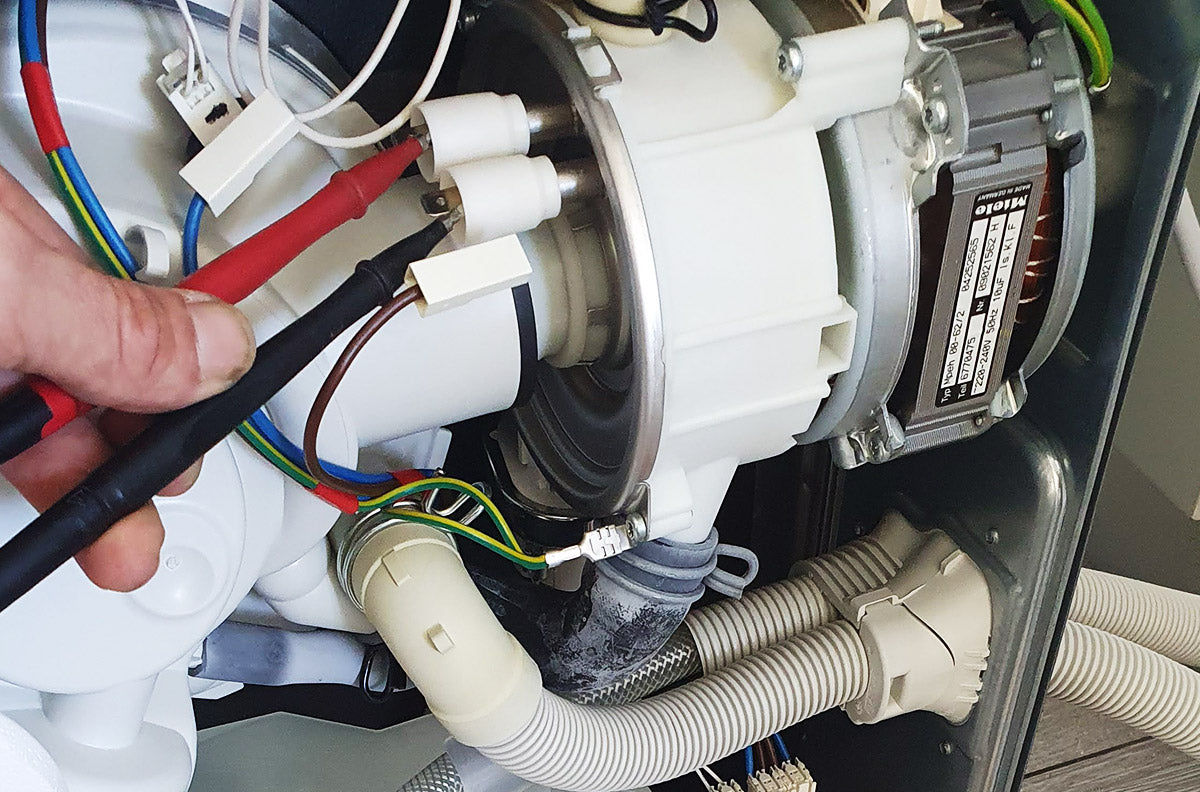Dishwasher repair? Washing machine repairs? Gold Coast Better Electrical can help!
We pride ourselves on prompt responses, transparent communication, and efficient solutions. We understand the importance of your appliances in maintaining a smoothly running household, and we strive to deliver reliable and affordable repair services. Whether it's a minor fix or a major repair, our dedicated technicians approach each job with precision and expertise. Trust us to bring your appliances back to life, allowing you to enjoy the comfort and functionality you deserve.

We can help with the following types of appliance repairs:
- Air conditioners
- Washing machines
- Clothes dryers
- Cooktops
- Dishwashers
- Dryers
- Electric stoves
- Hand dryer replacements
- Oven repairs
- Combination washer/dryer repairs and installations
Our team of experienced appliance repair technicians can carry out repairs to your broken, faulty, or damaged appliances throughout the Gold Coast, South Brisbane and Northern Rivers NSW. We can also repair ovens, cooktops and stoves. Our services cover a huge range of electrical appliance brands and models, from washing machines to electric ovens.
Our electrical appliance repairs team carry hundreds of commonly replaced parts in their service vehicles. This is to ensure that in as many cases as possible, your electrical appliance repairs can be carried out on the first visit providing our customers with prompt, efficient repairs.
Prior to ordering in parts, we'll always provide you with a repair quote so you have all the information you need to decide if you want to go ahead with the repairs.
We repair a huge range of appliance brands




Shayne was excellent! I was very happy with his work and the price. I would definitely recommend him and will be using him again in the future. Definitely goes above and beyond for his customers.
Connected with Gold Coast Better Electrical and would recommend them.
FAQ
Frequently Asked Questions about Appliance Repair Services
Common problems with washing machines
Is your washing machine not draining or is it too noisy? Like all electronic appliances, washing machines can run into problems. The issues might be easy to fix or could require assistance from an appliance repair technician. Here, we have listed common problems with washing machines and steps to fix the problems.
6 common problems with washing machines
- Washing machine won’t drain the water properly
- Shaking or vibrating noise
- Washing machine not turning on or keeps tripping the circuit
- Frequent water leakages
- Washing machine smells
- Noisy washing machine
Washing machine won’t drain the water properly
Common reasons for the drain to malfunction include:
- Waste or cloth piece stuck in the drain hose. To fix this issue, remove the drain hose and inspect it for any blockages. If there is anything blocking the drain, remove it.
- Broken drain pump
- Your drain cycle is not working properly and you can see an error code on your machine. In this case, refer to the instructions manual for recommended actions.
Shaking or vibrating noise
If your machine shakes or vibrates, it could be because of a heavy load causing the machine to be imbalanced. In this case, check if your machine is resting evenly on the floor. The floor should also be solid and stable to support the weight of the washing machine. Adjust the load inside your machine and make sure there is enough room for the clothes to move freely inside.
Washing machine not turning on or keeps tripping the circuit
This problem could arise due to many reasons like a faulty motor, overheating of the motor, or water leakage. It is best to contact a qualified appliance repair technician who can assess and repair your washing machine.
Frequent water leakages
Can you see frequent water leaks from your washing machine? The water leaks could be because of problems in the drain hose, door seal, or tub seal. If you are using a front loading machine, waste material stuck in the door seal can cause water leakages. This problem can be fixed by cleaning the seal. Check your drain hoses regularly and look out for any damage. The machine might also have a faulty tub seal that might need to be replaced.
These issues are best handled by appliance repair technicians who are skilled in washing machine repairs.
Washing machine smells
There could be a buildup of mould and bacteria in the washing machine leading to a musty smell. It is ideal to clean your machine regularly. Also, check your laundry area for signs of mould, if you can see the growth of mould, get it cleaned immediately. Clean your machine with vinegar and baking soda which is ideal to break down microbial growth. It will also leave your machine smelling fresher.
Noisy washing machine
The machine could be making noise if you have left keys or coins or other objects inside the pocket of your clothes. This problem could be fixed by pausing the machine and removing the objects. Turn off the machine completely and check the drain for any blockages if required.
How to clean a dishwasher?
The dishwasher you have been using to clean your dirty dishes needs cleaning too! Over time the dishwasher will accumulate grease, food waste, and germs. This food waste and grease will reduce the efficiency of your dishwasher and leave your utensils spotty and dirty. Therefore, it is important to clean your dishwasher thoroughly to keep it odour free, clean, and germ-free.
3 signs your dishwasher needs to be cleaned
- It smells funny - The build-up of food waste and grease in the machine can make it have an unpleasant smell.
- Your dishes have spots or water stains - If the water in your area is considered hard water, it can lead to the build-up of limescale in your dishwasher.
- Your dishes look greasy or dirty despite washing - If you have never cleaned your dishwasher before, you might have an accumulation of food waste and grease in the internal parts of your machine.
How often should you wash your dishwasher?
The drain and filters of your dishwasher should be cleaned at least monthly and a full clean every three months.
How to clean a dishwasher?
It can be cleaned using dishwasher cleaning tablets or vinegar and baking soda. Check your dishwasher manual to see the products recommended by your manufacturer.
- Scrape the food particles from your utensils before loading them in the dishwasher. This would prevent food waste from getting accumulated inside the filter. Also, saves you from too much effort later.
- Once the wash cycle is completed, remove the bottom rack and clean leftover food from the drain.
- Remove the filter (located below the bottom spray arm) and use a plastic brush and wash it with hot water and detergent.
- Clean the door seals with a damp cloth.
- Clean the exterior parts of the appliance thoroughly with an all-purpose cleaner or warm soapy water. Note: Check your manual first before using any cleaning products
- Clean the spray arms and jets with toothpicks or tweezers to remove any waste stuck inside.
- Remove the dish racks and soak them in hot soapy water.
- Place dishwasher cleaning solution in the empty machine and run through a hot cycle as per product instructions.
Cleaning the dishwasher restores the machine as good as new!
How to clean a washing machine?
Considering the fact that a washing machine is used to clean clothes, it may seem a little on the odd side that you need to consider cleaning your washing machine … but you definitely do! The environment created in washing machines can mean the perfect habitat for lots of nasties, including salmonella. Therefore, it is very important to ensure your machine stays free of mould and soap scum for the cleanest clothes possible.
There are heaps of benefits for cleaning your washing machine every 6 months, including:
- Stopping the machine hoses from getting blocked with scum
- Preventing the door seal from a build-up of mould and mildew
- Ensuring your clothes don’t come out of your machine with a musty smell
- Ensuring your soap dispenser doesn’t block up
Front Loading Washing Machine Cleaning Guide
- Ensure your machine is turned off at the wall.
- Unfasten the lint filter from the machine and remove any lint, then clean the filter with warm soapy water and replace it.
- Remove the detergent drawer and, in order to remove any build-up, wash with warm soapy water. This ensures the detergent and other liquids can be released evenly and effectively in a cycle. Once washed, place back into the machine.
- To check for blockages, remove the drainage hose. If there is any obstruction, remove and then replace the hose, ensuring it is attached properly to the machine.
- The door seal also needs cleaning by wiping with bleach or an anti-mould solution. Once you’ve done this, ensure you rinse the door seal well.
- The rest of the machine also needs cleaning, so wipe down the display panel, door and any other latches or knobs that your machine may have with warm soapy water - this includes all external surfaces!
- Once you have put the machine back together and wiped it over, turn it back on at the power switch.
- The first cycle you run once turning your machine back on is a bit of a strange one - fill the detergent dispenser with bicarbonate soda (½ a cup) and use vinegar to fill the fabric softener dispenser.
- Once you have put the bicarb and vinegar in the dispensers, place your machine on its longest (and hottest) cycle. This cycle must be empty!
- Once that cycle has finished, open the door and wipe over the inside of the drum, as some dirt or grime may have been moved around in the cycle.
- To finish, run your machine through a cold cycle to complete the process.
After you have completed the above steps, your washing machine should run like it is brand new!
Top Loading Washing Machine Cleaning Guide
- Ensure your washing machine is turned off at the wall.
- Remove the lint filter, remove any lint and then clean the filter with warm soapy water, then re-attach.
- To remove build-up, remove the fabric softener dispenser and clean in warm soapy water then replace.
- Then remove the drainage hose and check for blockages. If there is anything lodged in the hose, remove and then return the hose to the washing machine, ensuring it is securely attached.
- Then clean the machine by wiping the lid, display panel, knobs, latches and external surfaces with warm soapy water.
- Turn the washing machine back on once reassembled.
- Fill your washing machine through its hottest wash at the highest water level and, whilst filling, add 1 cup of vinegar and 1/2 cup of baking soda.
- Allow your machine to agitate for a few minutes.
- Turn your machine off or pause the cycle.
- Allow the water/vinegar/baking soda mix to sit in your machine for approximately 1 hour.
- Then restart your machine allowing the cycle to complete.
- Once the cycle has finished, wipe the drum to remove any dislodged particles.
- Finally, run the machine through a cold cycle to rinse completely.
If the above steps just don’t seem to be helping your washing machine to run any better, give us a call and we can get one of our appliance repair technicians to pop over and take a look at your top loading washing machine today.
Washing Tips
If your clothes aren’t smelling as fresh as you’d hoped, soak them in a bucket with ½ a cup of baking soda and your clothes will be perfectly smelling before you know it!
If you are finding that fabric softener isn’t doing its job as you’d hoped, or you’re finding that fabric softener is causing allergies or sensitivities, give vinegar a go. It is the perfect and inexpensive alternative and doesn’t leave residue on your clothes.
Thinking a DIY laundry detergent may be a better option for your home? Combine a nontoxic soap or detergent and add ½ cup of borax - this boosts its cleaning power, as well as has antiseptic, water-softening, whitening and antibacterial properties.
When washing your clothes, many people don’t realise the importance of the washer cycle you use. A regular cycle is more suited for dirty or strong clothes, whereas a permanent press-style wash is better for an average load. If your clothes are loosely woven or fine, the delicate cycle should be your first choice. Don’t forget, use cold water on bright coloured loads and hot water for white loads, then warm water for your average load of washing!









